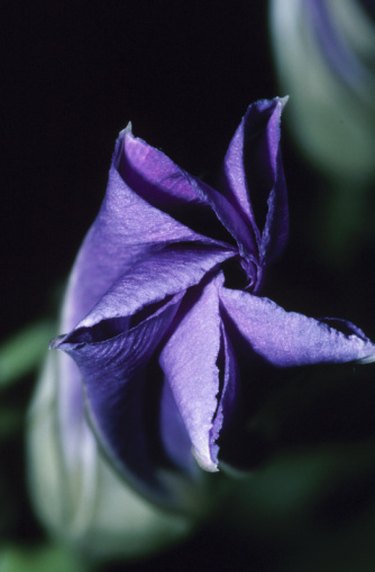
Flowers are often in full bloom during the day to absorb the sun's rays and draw pollinators. There are a number of plants, however, that bloom exclusively at night. hise nocturnal tendency of some plants is referred to as nyctinasty. They are active at night to attract nocturnal pollinators like bats and moths that are typically asleep during the day.
Evening Primrose
Video of the Day
Evening Primrose plants have stalks 4 to 5 feet high. They have yellow, white or pink flowers that bloom at night from June to September, giving them their name. Evening Primrose grows east of the Rocky Mountains in North America and is entirely edible.
Video of the Day
Nottingham Catchfly
Nottingham Catchfly is native to England and has flowers that bloom for three consecutive nights then fade. It has small, white or pink flowers perched on very stiff stalks that grow only a few feet high. It uses moths as primary pollinators and attracts them with a strong fragrance.
Moon Flowers
Moon flowers open at dusk and have large, white flowers that can open in just a few minutes. The petals die the morning after blooming and fall from the flower. They use moths as their primary pollinators. Moon flowers are closely related to the morning glory plant, which opens during the day to attract bees.
Night Phlox
Night Phlox is also known as midnight candy because of its strong, sweet smelling fragrance resembling cake or candy. It has white and purple pinwheel-shaped flowers that are tightly closed during the day but open wide at night to attract night-flying moths. The plant is native to South Africa.
Night Blooming Cereus
Night Blooming Cereus are native to the Caribbean and require warm temperatures. They must be brought indoors during winter months if regional temperatures drop below 50 F at night. Cereus have large, white flowers that bloom only once before dying the next day.
Evening Stock
Evening Stock is a bushy plant that grows about 2 feet tall. It has many purple flowers that each have four long petals that open the evening. The plant releases a spicy scent and is accustomed to desert and mountainous environments.
- Divine Caroline: Midnight in the Garden: Why Some Flowers Bloom at Night; Allison Ford; 2010
- Colorado State Cooperative Extension: The Night Shift; Judy Sedbrook; 2010
- Indiana University: Moon Flower
- Alternative Nature: Evening Primrose
- Plant Press: Nottingham Catchfly
- Firefly Forest: Matthiola longipetala – Night Scented Stock